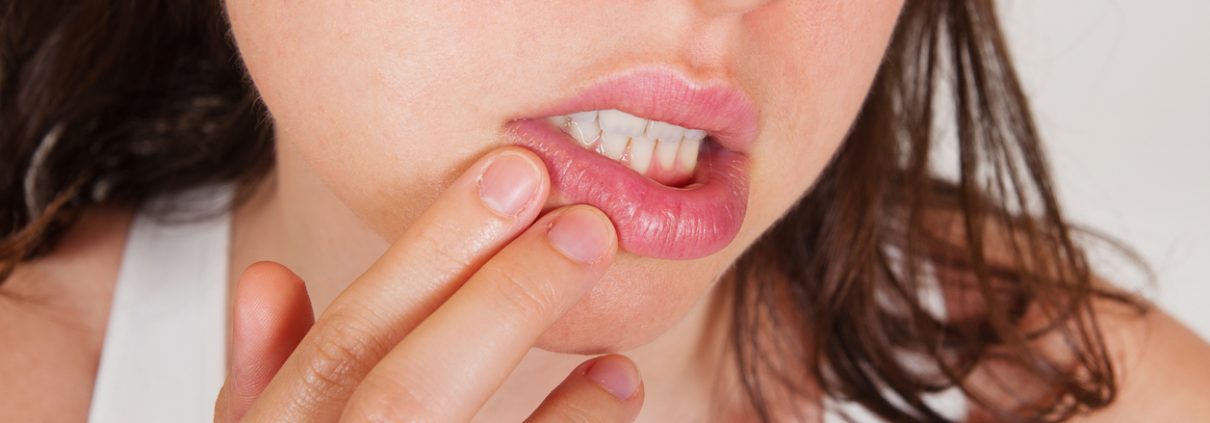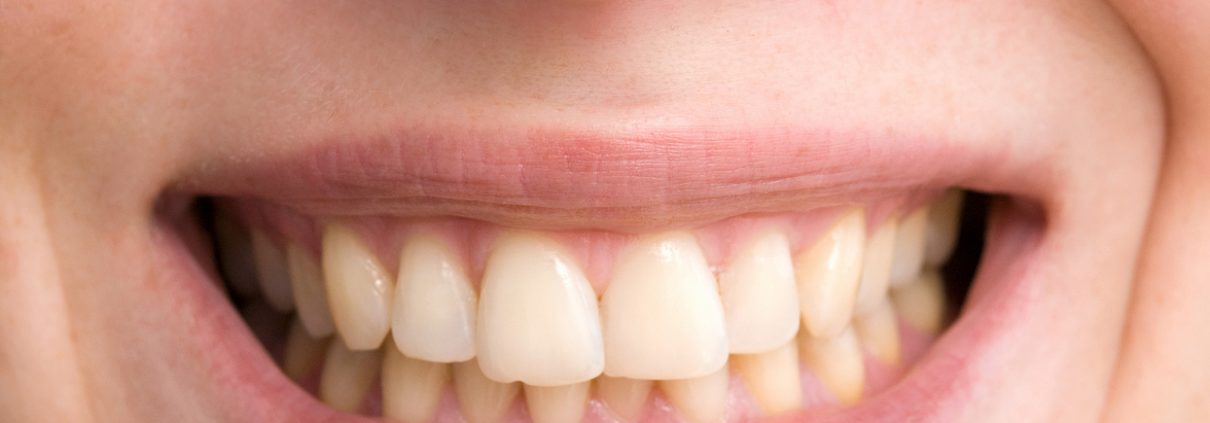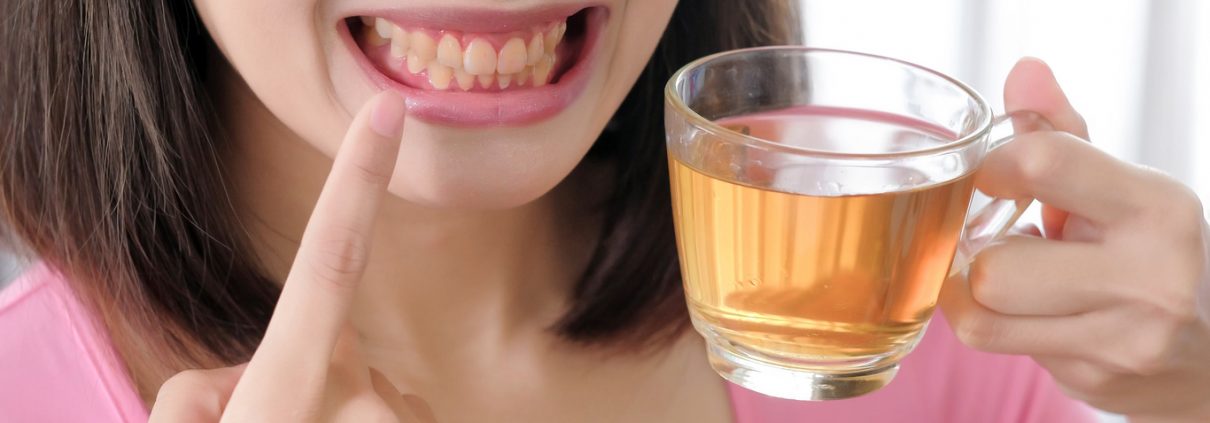The third tooth in the mouth is the tallest and most stable tooth and is sometimes called the arch of the tooth.
It is also called the canine tooth, because it is very tall in carnivorous animals, such as dogs whom the tooth is named after, and is used to tear meat and as a means of defense. In humans, the main force in lateral movements of the jaw is applied to this tooth, and due to having a long root and strong bone around it, it withstands these forces and protects other teeth. It also plays an important role in supporting the lips in the maxilla and prevents sagging lips.
Because permanent incisors in the maxilla are usually the last teeth to erupt instead of deciduous teeth, if for any reason, such as the loss of deciduous teeth before the eruption of permanent teeth (due to decay or impact) or the size of the permanent teeth relative to The size of the jaw, there is not enough space for it to grow, it goes out of the dental arch and may even lead to its occlusion. Sometimes, despite having enough space, this tooth grows in the wrong direction, which can cause damage to the root of the front tooth (tooth number 2).
The age of growth of this tooth in the maxilla is about 11 to 12 years old and in the mandible at 9 to 10 years old. Therefore, if the maxillary sting in a 14-year-old person has not yet grown or after growing on one side and after 6 months there is no trace of the opposite sting, you should see a dentist and preferably an orthodontist.
Under almost no circumstances should this tooth be extracted. As much as possible, orthodontic treatment tries to put it in the right place, because no tooth can replace it. If there is not enough space to arrange it, the number 4 tooth on the back is usually extracted. In some cases, despite attempts to remove it by orthodontic treatment due to its very poor position in the jaw or its jaw, it should be pulled and if it is hidden, it should never be left in the jaw because it may cause cysts and in rare cases, a tumor.
Do you have earaches? Our guess is a dental problem in your mouth!
Dental problems may be the cause of earache and ringing in the ears. It is also caused by the opening and closing of the jawbone and teeth to the inside, middle and outer ears.
TMJ disorder is an example of these jaw bone problems that are often considered earaches.
The ear and throat are connected tubes, while the nerve that controls the deep inner muscle of the ear can also control the jaw muscles. This means that the pain in one area may cause problems.
When it comes to diagnosing pain, it is the radiologist’s suggestion to examine the mouth and face and describe the symptoms.
These dental problems are common causes of ear pain:
TMJ disorder: About 10 million Americans suffer from TMJ. This problem occurs when the TMJ joint is not stacked correctly. As a result, the patient often experiences jaw pain, facial pain, crooked teeth, ringing in the jaw, ringing in the ears, and earaches. The dentist examines the jaw and related symptoms and listens to the diagnosis of the cause of the pain. If the TMJ is impaired, a custom occlusal guard should be placed to move the jaw.
Poor bite level: Even unevenness in the jaw causes pain and pressure that puts pressure on the outer ear. A specialist can treat poor bite balance with cosmetic or restorative methods.
Bruxism: Bruxism is another cause of toothaches. Bruxism causes earache and ringing in the ears.
Because the TMJ joint is adjacent to the middle and inner ear, any problem that develops in the jawbone can affect the ear.
The set of cosmetic restoration processes is all done with one goal in mind, and that is the design of a beautiful and principled smile. This is what is called the Hollywood smile. These treatments include the following:
Ceramic laminate (porcelain veneer): In this method, tooth defects are covered with a thin shell of the same color as the tooth. In this method, teeth need to be cut for beauty.
Dental Bridge: Bridges are another type of cosmetic dental veneer. In fact, using two adjacent teeth as a base, a bridge-shaped veneer is created to restore the beautiful appearance of your lost tooth.
Dental implants: Missing teeth have a big impact on a person’s appearance and smile design. Especially when they are in the line of laughter. Dental implants are a sure solution to correct it.
Gingival cosmetic surgery: The beauty of the gums plays a big role in making the teeth look beautiful. Sometimes it is necessary to correct the height of the gums to create a proper smile design. This operation is called cosmetic gum surgery.
Tooth bleaching (teeth whitening): Tooth discoloration caused by food coloring, smoking, etc. is very effective in the beauty of laughter. Teeth bleaching at home and in the office is the solution to eliminate these discolorations and restore a beautiful appearance to a person’s smile. Bleaching in the office quickly whitens teeth, and bleaching at home ensures that this whiteness lasts.
Alignment of teeth without orthodontics (the beauty of teeth without orthodontics): One of our most common uses for dental bonding is laminate composite or veneer composite. This method has been used in many cases today for people who want to have straight and straight teeth without orthodontic treatments. In many cases, straightening teeth is possible with the help of a tooth bonding technique.
For keeping healthy, beautiful teeth, follow these recommendations.
Keeping teeth healthy is more important than their appearance. Some materials scratch the surface of the teeth. Those who use less of these substances have healthier teeth. These substances sometimes cause allergies in the gums.
Do not brush your teeth too much.
If you want to find the best toothpaste and toothbrush, seek the approval of the American Dental Association (ADA). This way you will never use a rough toothbrush. A toothbrush, while it should be able to remove food deposits on the teeth, should not damage the gums. A soft toothbrush is the most suitable type of toothbrush.
Never use a toothbrush for more than 3 months. This time limit is mandatory. If you want to use an electric toothbrush, make sure that the head is rotating and does not move vertically.
For teeth whitening, there are a few options you can take such as dental bleaches. There are different types of bleaches. Ordinary bleach sold over-the-counter in pharmacies does not have a detrimental effect on teeth and gums. But there are packages that are available as bleach for dentists. These packs contain acidic compounds that may damage the enamel in the long run. Ask your dentist for the best type.
The most effective and fastest method of teeth whitening is possible using concentrated solutions. These compounds affect the structure of tooth enamel and reduce its strength. On the other hand, after a short time, its color returned to its original state and in the end, it resulted in nothing but a waste of time and money. In other words, teeth whitening is not due to discoloration, but the removal of the surface layers of tooth enamel.
Root canal
Previously, a tooth whose root had become infected had to be extracted. However, in 95% of cases today, this is no longer the case. Root canal therapy treats the root (also called the pulp) of the tooth. Today, in new dental technology, wisdom tooth denervation has become a relatively painless technique that allows you to preserve your teeth instead of losing them. Widespread tooth decay, trauma, tooth fracture, and gum disease can cause tooth loss and can cause symptoms, such as pain when chewing and pressing on the tooth, tooth sensitivity to cold and heat that lasts longer than usual. Whatever the cause of the nerve canal problem, your teeth can be saved by using root canal therapy.
What is root canal therapy?
In Greek, “endo” means inside and “dent” means tooth, so endodontic treatment means healing the space inside the tooth. Knowing the anatomy of the tooth will help to understand the root canal treatment. Inside the tooth, beneath the white enamel and hard layer called dentin, is the soft tissue of the tooth root. The root of the tooth contains blood vessels, nerves, and connective tissues, and as the tooth grows, it forms the hard tissue that surrounds the tooth. Root tissue extends from the crown of the tooth to the tip of the tooth root, where it attaches to the surrounding tissue of the tooth root. Root tissue plays an important role in tooth growth. However, after full growth, the tooth can remain without roots, because the tooth can feed on the surrounding tissue.
How does root canal therapy protect teeth?
Root canal therapy removes inflamed and infected tissue from the root and thoroughly cleans and shapes the root canal, then fills and closes the empty space in the root canal. You can then see your dentist again for a veneer or other restorative treatment to fully restore tooth function. After restoration, the denervated tooth acts like any of your other teeth.
Why may a tooth need root canal therapy?
Root canal therapy becomes necessary when the root (soft tissue inside the root canal) becomes inflamed or infected. Inflammation and infection of root tissue can occur for a variety of reasons:
Tooth Decay
Perform repeated treatments on the teeth
There are cracks or fractures in the teeth
Any blow to the tooth, even if it does not cause a fracture or apparent crack on the tooth, can lead to damage to the root tissue of the tooth. If inflammation or infection of the root tissue is not treated, it can lead to toothache and eventually tooth abscess.
Signs that the tooth needs root canal therapy:
Symptoms to look out for are:
Pain
Prolonged sensitivity to heat and cold
Sensitivity to touch and chewing
Jaundice and tooth staining
Swelling
Sensitivity and fluid leakage from abscess sacs and adjacent bone and gum tissue
How to perform root canal surgery
Root canal therapy is often performed in one or two visits to the dentist and includes the following steps:
The root canal specialist injects local anesthesia after examining the tooth and examining the photo taken of the tooth. After the tooth is anesthetized, he places a small protective layer of rubber to keep the tooth dry in that area to separate the tooth from adjacent teeth and prevent saliva from entering it.
The orthodontist then pierces the crown and uses very fine tools to remove the root tissue from the root canal and root canals and to shave the root canal and fill it with dental fillings.
After the root canal is cleaned and shaved, the root canal specialist fills the space inside the root with environmentally friendly fillers (usually a rubber-shaped material called rubber). In order to completely seal the root space, this filler is placed inside the root space with adhesives. In some cases, a temporary filler is placed on the root canal to close the entrance. Before the tooth is restored, this temporary filling material is removed by the dentist.
After the final referral to a root canal specialist, you should see a dentist to place a veneer or other restorative material on the tooth and protect and restore it to its full function.
If the tooth does not have the proper structure to hold the restorative material inside, the dentist or endodontist may place an abutment inside the tooth. You can get more details about different methods of repairing your teeth by asking your dentist.
Will you feel any pain during the denervation treatment?
Many root canal procedures are performed to relieve toothache caused by inflammation or infection of the root. With new techniques and local anesthesia applied, most patients do not feel any pain during endodontic treatment.
Your teeth may be sensitive for the first few days after treatment, especially if you had a toothache before the neurosurgery treatment. This allergy can be treated with over-the-counter medications or prescribed by your dentist. Follow the instructions of your root canal specialist completely. For some time after the denervation, your tooth will look slightly different from other teeth. However, if you feel severe pain or pressure that lasts for more than a few days, be sure to contact your endodontist.
When the tooth begins to open the gums to find a way to fully grow, it is normal to experience some discomfort as well as swelling in the gums.
When wisdom teeth come out through damage to the gums, they can cause complications that lead to more swelling, including:
A welt that traps food and bacteria, in which case the area becomes inflamed.
Swollen gums can also be caused by a vitamin deficiency or gingivitis, but do not normally cause swelling or damage to your teeth.
How can we reduce the swelling of the gums in wisdom teeth?
Wisdom teeth are one of the causes of pain in the jaw area.
If your teeth are swollen, food is trapped or food is sticking to your teeth, rinse your mouth thoroughly. The dentist recommends the use of salt water or the use of antibacterial mouthwashes in these cases. Swelling is reduced when these foods are cleared from your mouth and teeth.
You can not prevent the full growth of your wisdom teeth.
Also, avoid problems such as occlusion, which can lead to improper tooth extraction.
The best way to prevent these problems is to see your dentist every six months.
Your doctor can prescribe strategies to prevent these problems by examining your tooth growth. It is not uncommon for the jaw to feel pain when a wisdom tooth comes in. Swelling of the gums in the wisdom teeth can be due to reasons such as food and bacteria being trapped in the gums. When you feel pain or swelling in your gums, you can use ice packs or antibacterial drugs and painkillers to relieve the pain as well as prevent the growth of more bacteria.
Cause of swelling of the gums around the teeth:
Possible causes of swollen gums around a tooth include:
Poor dental hygiene
Occasionally, food debris can be trapped between the teeth and the gum line. Flossing and brushing can help remove these substances. If you do not remove these substances, the bacteria present in the mouth will grow in this area and cause abscesses or swelling around the teeth.
Periodontal diseases
Infection and inflammation of the gums may cause periodontal disease.
About 46% of people 30 years of age or older in the United States have symptoms of gum disease. The medical term for this disease is periodontal. Periodontal disease occurs due to infection and inflammation of the gums around the teeth. This infection occurs when plaque builds up between a person’s teeth.
Medical research shows that the primary color of a healthy tooth is not as white as we think, and most white teeth are not synonymous with being healthier.
The strongest teeth are the healthiest and most natural, but most of these teeth are not white. Of course, we cannot say that these teeth are not completely white, but it means that their color is not white paper, but a little darker. But what is the reason for this?
The enamel itself is bluish white, but it is also somewhat clear, so the yellow dentin underneath makes the tooth appear light yellow or gray.
Of course, this type of tooth whitening is completely different from tooth staining due to the use of external items, and undoubtedly, teeth that have been stained due to side effects are less healthy than normal teeth. All dentists and specialists definitely confirm that teeth that have changed color due to not using toothpaste such as toothbrush, floss and mouthwash, are at a much lower level of health than ordinary teeth.
The two main causes of tooth discoloration due to external elements can be mentioned as excessive tobacco consumption or rare metabolic disorders. This disorder can be partially corrected with a combination of bleaches and polishing the tooth’s laminar layer, but each of these solutions will weaken the teeth if used consistently.
Solutions to prevent tooth discoloration:
Prevention is always better than cure, which is why we offer you simple ways to protect your teeth from discoloration.
Avoid excessive consumption of sweets, as sweets often cause cavities and discoloration of the teeth.
If you smoke or smoke, try to use special fluorides.
Hydrogen peroxide is one of the best toothpastes and you can put this substance on your toothbrush and increase the whitening effect of teeth. Sodium perborate is also present in this substance but it is very different, although the consumption of sodium Perborate should only be taken under a doctor’s supervision.
If you do not use the toothbrush properly, the teeth will change color and in such a case, you must have two toothbrushes and you can use one of them in a dry state to clean the mouth and the other with toothpaste.
It is very important to observe proper oral hygiene in this regard, and this solution is usually not recommended for aesthetics, and in fact, lack of proper oral hygiene can have a negative impact on overall dental health.
Teeth change color over time due to various factors and spots appear on their surface. But discoloration and stains on the surface of the tooth are different, and this makes their treatment methods also different.
In general, in terms of depth of discoloration, three types of tooth stains are superficial stains, deep stains and aging stains.
Surface stains: These stains are created in the outer layer of the tooth, which is called enamel. Stains and discoloration from foods such as coffee and tea, soft drinks and other substances are of this type. Cigarettes can also cause surface stains.
Deep spots: These spots are created in the internal structure of the tooth (dentin layer). Ivory has a darker color. In the following cases, deep spots appear in the dentin layer:
They are exposed to a lot of fluoride during childhood when their teeth are growing
Your mother took the antibiotic tetracycline during pregnancy, especially in the second half of pregnancy
In childhood, a growing permanent tooth is damaged by injuries such as a fall or accident
Permanent tooth is injured and has internal bleeding that has changed its color (red, brown or black tooth)
You may be born with a rare medical condition called dentin genesis imperfecta, which causes teeth to turn gray or purple.
Aging spots: This color change includes any type of surface and depth. The dentin layer turns yellow with age. On the other hand, the enamel that covers the surface of the tooth becomes thinner over time and shows more dentin color. On the other hand, eating high-pigmented foods and smoking also make teeth yellower. Eventually, injuries such as lip filling and cracking can cause tooth discoloration.
As mentioned, the factors that cause discoloration and stains on teeth are not always limited to colored drinks and foods. Some people experience tooth discoloration as a result of taking drugs, fluoride, cigarettes and other tobacco products, aging or injuries. The method of teeth whitening varies depending on the severity of the tooth discoloration and its type. That’s why it’s important to identify the cause of the discoloration.
If one of your teeth is darker than the other, it is often due to dental injuries or certain medications. If the cause of a particular tooth is dull, injury and trauma can occur in two cases. Iron in the blood may have entered the dentin structure of the tooth and saturated it, resulting in deep spots inside the tooth. Another condition is that the injury has caused the tooth structure to become out of shape, resulting in more spots accumulating in some areas of the tooth.
Sometimes when you look closely at your teeth in the mirror you will notice white spots on the surface of the tooth and sometimes you may see only a white spot on the surface of the tooth. White spots on the surface of the teeth are usually the first signs of tooth decay and possibly perforation in the future. Do not worry because it is not too late for treatment. You should have regular check-ups every six months and scaling in a timely manner to prevent tooth decay. White spots on the surface of the tooth indicate that the process of decalcification (meaning the removal of calcium from the tooth structure) is taking place. Calcium depletion usually occurs due to poor diet and lack of saliva flow in the mouth and is irreversible. However, this condition can be managed by drinking plenty of water and many times, as well as using fluoride-containing products to mineralize teeth.
Discoloration after teeth whitening
In fact, this problem does not mean discoloration of the teeth. When you go to the dentist to whiten your teeth, you should know that dental restorations such as veneers or laminates, or veneers, fillings and implants do not whiten with this treatment and do not change color. The surface of dental restorations is completely smooth, like glass, and unlike teeth, there is no porosity. Due to the smooth and polished surface of the restoration and the absence of porosity, the pigment materials cannot enter its structure and change its color. When you want to whiten your teeth, dental restorations do not have pigment and stains that become whiter when you lose them. Therefore, after bleaching, your natural teeth turn white, but the restorations do not change color, which is why there is a color difference between natural teeth and dental restorations. As a result, you think the restorations have changed color. That is why it is always recommended that if you want to whiten your teeth, do this before tooth restoration so that the restoration color is chosen according to your whitened teeth.
Sometimes there is a bitter taste in the mouth that can not be eliminated by eating sweets. Bitterness in the mouth depends on various factors, and with some measures, this taste change can be eliminated. A bitter or bad taste in the mouth can be a natural reaction to spicy and sour foods.
Taste is a complex sensation that can be caused by many factors, such as poor oral hygiene, dry mouth, or pregnancy. Treating a persistent bitter taste in the mouth can be controlled with some simple home remedies.
Signs and symptoms of bitter taste in the mouth:
Bitter and persistent taste in the mouth is medically known as taste insufficiency. This taste has been described as an unpleasant taste and can last for a long time until the cause is determined. People with taste impairment may experience a persistent unpleasant taste, which is often one of the following:
Bitter
Metal
The taste can hardly be changed for a short time by eating or anything else. A person may still feel the bitter taste even after brushing.
Many of the causes of bitter taste in the mouth are not serious, however the symptoms can cause irritation or interference with a person’s regular diet or enjoyment of daily life.
The following conditions can cause a bitter taste in the mouth:
Dry mouth:
Dry mouth is also known as dry mouth and occurs when the mouth does not secrete enough saliva. Because saliva helps reduce bacteria in the mouth, having less saliva means more live bacteria in the mouth.
People with dry mouth experience a feeling of stickiness and dryness in their mouth, which can be due to factors such as medication, smoking or pre-existing disorders. A person also experiences dry mouth with a stuffy nose. Because breathing through the mouth causes it to dry out. People with persistent dry mouth should consult their doctor for a diagnosis.
Oral issues:
Poor oral hygiene can also cause a bitter taste in the mouth or it may increase cavities, infections and gum disease or gingivitis. Many common oral and dental problems can be eliminated or prevented by brushing or flossing. The use of antibacterial mouthwash while brushing also minimizes harmful bacteria.
Pregnancy:
Many pregnant women complain of a bitter taste or metal in their mouths in the first 3 months. The body’s hormones fluctuate during pregnancy, and this fluctuation can affect the senses, which can make the taste of some foods unbearable. This taste disappears with the progression of pregnancy or after childbirth.
Burning mouth syndrome:
Burning syndrome is a condition that causes a burning sensation in the mouth. This feeling can be completely different, but many describe it as eating hot peppers. In addition, some people can feel the bitter taste in the mouth.
Symptoms of mouth burning syndrome may be sporadic but can also be chronic and long-lasting. Some people with this syndrome may have trouble eating or drinking, while others may not have these symptoms.
Menopause:
Menopausal women may experience a bitter taste in their mouth, which is due to low levels of estrogen in the body, and may be due to dry mouth.
Thrush:
A yeast infection in the mouth often causes white spots on the tongue, mouth and throat. It may also cause a bitter or unpleasant taste in the mouth, and may persist until the infection is cured.
Acid reflux:
Gastric acid reflux disease can be an unintended source of bitterness in the mouth.
If you read in this section of Moist Health, this disease tends to irritate the fallopian tubes and cause burning in the chest or abdomen. It can also cause a rotten or bitter taste in the mouth and as long as there are other symptoms. Have, may continue.
Stress and anxiety:
High levels of stress and anxiety can trigger the body’s stress response, which often changes a person’s sense of taste. Anxiety can also cause dry mouth, which is often accompanied by a bitter taste.
Nerve damage:
Nerves, like the rest of our senses, attach taste buds directly to the nerves in the brain. Nerve damage can change the way a person deals with tastes. Nerve damage can be from a head injury or other condition, which as follows:
Epilepsy
Multiple sclerosis
Brain tumors
Oral medications and supplements
In some people, certain medications, supplements, and medical treatments may cause a bitter taste in the mouth. You should consult your doctor to find out about the medications you are taking.
Impacted teeth may be present in different places in the patient’s oral environment. There are two types of impacted teeth, impacted canines, and impacted wisdom teeth. Implanted wisdom teeth are more common in many people and require surgery if needed. In this article, we are going to introduce you to the issues surrounding impacted canines.
Concealed canines are dental abnormalities that affect the appearance and shape of the tooth bite and arch. This is also due to the fact that the canines are the most primitive teeth that are placed on top of each other when the jaws are paired. Therefore, they are impressive in appearance.
Fangs are usually found in people in the upper jaw, otherwise these teeth can be seen in the arch of the tooth and above the root of the tooth.
Incubation of canines (especially in the maxilla) is a common clinical event. In addition to the delicate appearance caused by the absence of canines in the mouth, there is always a risk of lesions such as cysts or tumors for impacted teeth. This anomaly is more common in women than men and only 2% of people will suffer from this anomaly.
One-third of canine occlusions are found in the labial region and two-thirds in the palatal region.
Tooth occlusion in the maxilla is much more common than occlusion in the mandible and can be said to be twice as common in the maxilla. It should be noted that impacted teeth are available in two forms, labial and palatal, which are briefly defined below:
If the canine teeth are in the upper jaw and in the outer part and towards the jaw, it is called labial.
This is when the canines in the upper jaw, located in the palate, are known as the palatal.
Causes of canine occlusion
The occlusion of the maxillary canine can be towards the cheek (labial) or towards the tongue (palatal). In labial cases, the most common known etiology is the lack of dental arch space, while in palatal cases, deviation of the evolutionary path of the canine bud is the most likely cause of the anomaly.
Orthodontists recommend that a general radiograph be taken at the age of 7 to check for tooth growth and future abnormalities.
In most cases, the main cause of latent tooth growth is the lack of sufficient space in the jaw. To open the jaw space, you can see an orthodontist to use an expander for treatment.
If not diagnosed early, surgery may sometimes be needed to remove the obstructed teeth to make room for the canine.
To diagnose tooth occlusion, your specialist will refer you for an x-ray and x-ray. If the following conditions are found on the radiograph, treatment should be sought:
– Absence of bony protrusion of the canine tooth
– Existence of a bulge in the palate and maxilla
– Abnormal growth and displacement
– No permanent canine growth and deciduous tooth retention until 13 years old
– Treatment of impacted canines
If treated and diagnosed early, no further surgery or treatment is needed.
© Copyright
Contents on this website are properties of either Oxnard Gentle Dentistry or Persisca LLC. Images on any and each single page of this website are licensed to Persisca LLC. Saving and reusing any of the images, copying the contents of any page and/or using the slogans are prohibited.
Oxnard Gentle Dentistry
300 E Esplanade Dr., # 1600
Oxnard, CA 93036
Phone: 805-486-6327
Fax: 805-385-6384
info@oxnardgentledentistry.com











